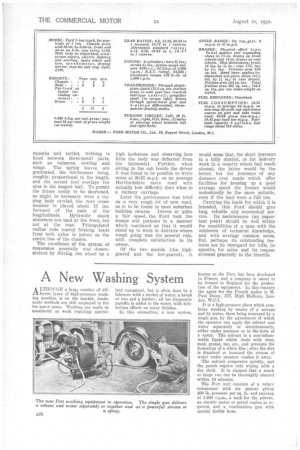A New Washing System
Page 46

If you've noticed an error in this article please click here to report it so we can fix it.
ALTIIOUGH a large number of different types of high-pressure washing machine is on the market, inadequate methods are still employed in far too many cases. Washing can really be considered as work requiring special
Ned equipment, hut is often done by a labourer with a bucket of water, a brush or two and a leather ; all too frequently paraffin is added to the water, with deleterious effects on many finishes.
In this connection, a new system,
known as the Fort, has been developed in France, and a company is about to be formed in England for the production of the equipment. In this country the agent for the French maker is M. Paul Deiny, 317, High Holborn, London, W.C.1.
It is a high-pressure plant which combines washing by means of a solvent and by water, these being conveyed by a single gun, by the adjustment of which the operator can apply the solvent and water separately or simultaneously, either under pressure or in the form of a spray. The solvent is a non-inflammable liquid which deals with dust, mud, grease, tar, etc., and prevents the formation of a White film ; after the dirt is dissolved or loosened the stream of water under pressure washes it away.
The solvent evaporates quickly, and the panels require only wiping with a dry cloth. It is claimed that a coach or large van can be thoroughly cleaned within 10 minutes.
The Fort unit consists of a rotary compressor with six pistons giving 400 lb. pressure per sq. in. and running at 1,400 r.p.m., a tank for the solvent, an electric motor or petrol engine as required, and a combination gun with special double hose.




































































































